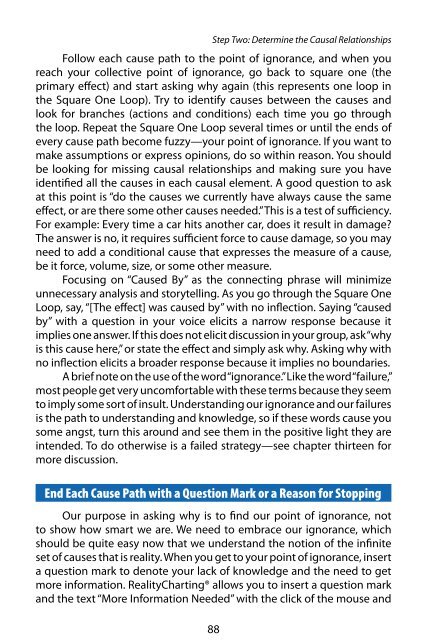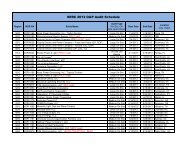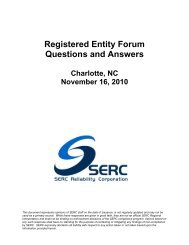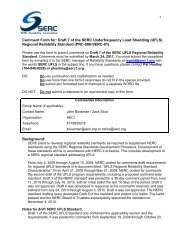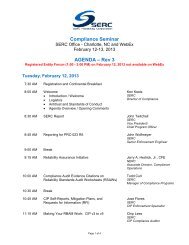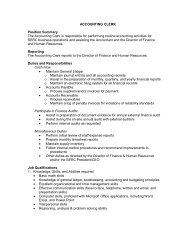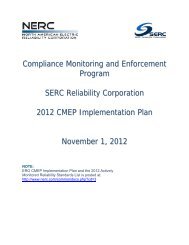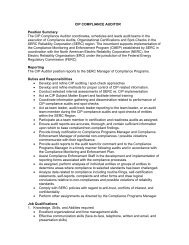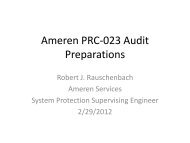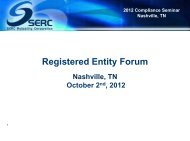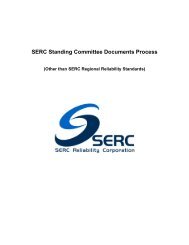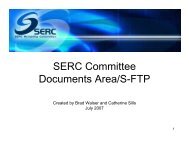RealityCharting e-book .pdf - SERC Home Page
RealityCharting e-book .pdf - SERC Home Page
RealityCharting e-book .pdf - SERC Home Page
- No tags were found...
Create successful ePaper yourself
Turn your PDF publications into a flip-book with our unique Google optimized e-Paper software.
Step Two: Determine the Causal Relationships<br />
Follow each cause path to the point of ignorance, and when you<br />
reach your collective point of ignorance, go back to square one (the<br />
primary effect) and start asking why again (this represents one loop in<br />
the Square One Loop). Try to identify causes between the causes and<br />
look for branches (actions and conditions) each time you go through<br />
the loop. Repeat the Square One Loop several times or until the ends of<br />
every cause path become fuzzy—your point of ignorance. If you want to<br />
make assumptions or express opinions, do so within reason. You should<br />
be looking for missing causal relationships and making sure you have<br />
identified all the causes in each causal element. A good question to ask<br />
at this point is “do the causes we currently have always cause the same<br />
effect, or are there some other causes needed.” This is a test of sufficiency.<br />
For example: Every time a car hits another car, does it result in damage<br />
The answer is no, it requires sufficient force to cause damage, so you may<br />
need to add a conditional cause that expresses the measure of a cause,<br />
be it force, volume, size, or some other measure.<br />
Focusing on “Caused By” as the connecting phrase will minimize<br />
unnecessary analysis and storytelling. As you go through the Square One<br />
Loop, say, “[The effect] was caused by” with no inflection. Saying “caused<br />
by” with a question in your voice elicits a narrow response because it<br />
implies one answer. If this does not elicit discussion in your group, ask “why<br />
is this cause here,” or state the effect and simply ask why. Asking why with<br />
no inflection elicits a broader response because it implies no boundaries.<br />
A brief note on the use of the word “ignorance.” Like the word “failure,”<br />
most people get very uncomfortable with these terms because they seem<br />
to imply some sort of insult. Understanding our ignorance and our failures<br />
is the path to understanding and knowledge, so if these words cause you<br />
some angst, turn this around and see them in the positive light they are<br />
intended. To do otherwise is a failed strategy—see chapter thirteen for<br />
more discussion.<br />
End Each Cause Path with a Question Mark or a Reason for Stopping<br />
Our purpose in asking why is to find our point of ignorance, not<br />
to show how smart we are. We need to embrace our ignorance, which<br />
should be quite easy now that we understand the notion of the infinite<br />
set of causes that is reality. When you get to your point of ignorance, insert<br />
a question mark to denote your lack of knowledge and the need to get<br />
more information. <strong>RealityCharting</strong>® allows you to insert a question mark<br />
and the text “More Information Needed” with the click of the mouse and<br />
88


